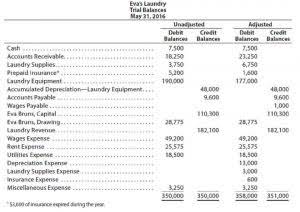
Managing and presenting financial information accurately is essential for any organization. For nonprofit entities the statement of functional expenses (often referred to as a SOFE) is not just crucial; it’s often mandatory. This statement provides a breakdown of how expenses are allocated across various functions within the organization, offering transparency and accountability to stakeholders. In this blog post, we’ll delve into the details of a statement of functional expenses, explain why it’s important, and provide you with a comprehensive template to simplify the process. The first step in preparing a Statement of Functional Expenses is to define the functional expense categories. These categories typically include program services, management and general, and fundraising.
Best Practices for Nonprofits: Statement of Functional Expenses

In nonprofit accounting, the Statement of Functional Expenses is a financial statement that provides detailed information about how an organization’s expenses are allocated to different functional categories. This statement is a key component of the financial reporting for nonprofit organizations, offering transparency and accountability regarding the use of resources. It typically categorizes expenses into three main functional areas statement of functional expenses including program services, management and general expenses, and fundraising. With this ASU, all nonprofits are now to report the relationship between functional expenses, such as program services and supporting services, and natural expenses, such as salaries, utilities and rent. Nonprofits must present the relationship between the two forms of expenses concurrently.
- This helps donors trust that you’ll handle their contributions appropriately, encouraging them to continue supporting you.
- Nonprofit organizations are businesses that do not operate with the goal of making a profit as a for-profit business would, but nonprofit businesses have many ways that they earn as well as spend money.
- A balance sheet heading or grouping that includes both cash and those marketable assets that are very close to their maturity dates.
- Organizations undergoing an annual nonprofit audit must present expenses by functional areas in financial statements.
- A key component of this accountability-focused approach to accounting is compiling financial statements, which are documents that summarize your nonprofit’s use of funds.
Bottom Line For Nonprofit Functional Expenses
- To avoid misclassification, it’s important to understand the nature of each expense and the appropriate accounting treatment.
- One critical component of this financial reporting is the Statement of Functional Expenses.
- To foster trust and effective stewardship, donors, supporters, and regulatory bodies must have a clear understanding of how funds are used.
- The most important thing is establishing a clear process and methodology for allocating your expenses.
- The Statement of Activities looks at the entire organization and reports on the revenues and expenses of the nonprofit during a specific reporting period.
- Nonprofits often undergo audits, and it’s essential that your financial statements, including the Statement of Functional Expenses, stand up to scrutiny.
- Home4U also paid the February utilities which were equal to the estimated amount of $350.
The key to tracking functional expenses is setting up processes and being disciplined with your bookkeeping. A Statement of Functional Expenses is a matrix-style report Accounting for Churches that shows the breakdown of functional and natural expenses in an easy-to-read table. Many people are comfortable with natural expenses because most for-profit businesses classify their expenses ONLY by nature. We’re here to talk about functional expenses, but the Statement of Functional Expenses actually shows 2 types of expenses– functional and natural. Consistency is essential when preparing a Statement of Functional Expenses.
The Statement of Functional Expenses

Our blog post outlines several common mistakes, such as misclassification of expenses and lack of detail. We provide tips and guidance on how to avoid these pitfalls, ensuring that your Statement of Functional Expenses accurately reflects your organization’s financial operations. Our in-depth guide is designed to assist non-profit organization leaders, financial managers, donors, potential funders, and regulatory bodies.
In Pursuit of Good Accounting and Good Governance

It highlight which ones are operating efficiently, and allows management to make informed decisions about your financial health. Allocating expenses is dividing overhead costs between all of the functions that are indirectly related to that cost. The square footage allocation example we used above is one common example of functional expense allocation. These include expenses for everyday activities like salaries and wages, employee benefits, utilities, accounting, advertising, marketing, equipment, etc. Remember, your goal with a financial statement is to make it informative to the reader – to the donor, the auditor, the agency, the board.
CATEGORIES
It could also incur promotional costs for only fundraising purposes, or it could incur printing expenses for only M&G purposes. These policies can include rules related to spending limits, allowable expense types, and required payroll documentation. Specific to categorization, organizations can require employees to categorize and tag every expense before submitting an expense report. Administrators reviewing and approving these reports can always update the selected functional and natural expense categories if they see a selection made in error.
